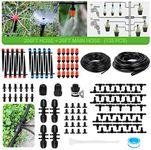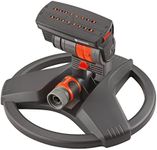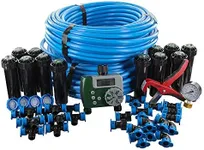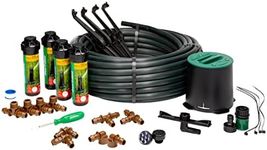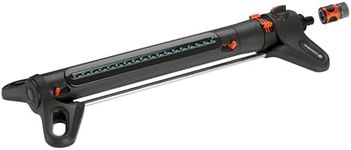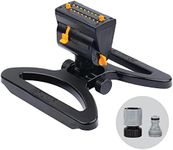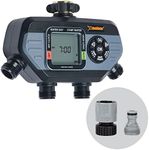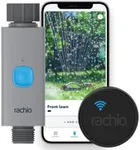Buying Guide for the Best Garden Watering System
Choosing the right garden watering system can make a big difference in the health and appearance of your plants, as well as how much time and effort you spend on garden maintenance. The best system for you depends on your garden size, the types of plants you have, and how much automation you want. Understanding the key features will help you select a system that keeps your garden thriving with minimal hassle.Type of Watering SystemThe type of watering system refers to the method used to deliver water to your plants. Common types include drip irrigation, soaker hoses, and sprinkler systems. Drip irrigation delivers water directly to the base of plants, making it efficient for gardens with individual plants or rows. Soaker hoses slowly release water along their length, which is good for garden beds. Sprinkler systems spray water over a wide area, suitable for lawns or large open spaces. To choose the right type, consider your garden layout and the water needs of your plants. For precise watering and water conservation, drip systems are ideal, while sprinklers are better for covering large, grassy areas.
Coverage AreaCoverage area is the maximum space that the system can effectively water. This is important because you want to ensure all your plants receive adequate moisture. Systems are often rated for small, medium, or large gardens. Small systems are suitable for container gardens or small beds, medium systems for typical home gardens, and large systems for expansive lawns or multiple beds. Measure your garden and match it to the system’s coverage to avoid dry spots or overwatering.
Water Flow ControlWater flow control refers to the ability to adjust how much water is delivered and how quickly. Some systems have adjustable emitters or valves, allowing you to tailor the flow for different plants. This is important because different plants have different water needs. Systems with good flow control let you avoid wasting water and prevent overwatering sensitive plants. If you have a variety of plants, look for a system with easy-to-adjust flow settings.
Automation and TimersAutomation and timers allow you to set watering schedules so the system operates without manual intervention. This is important for convenience and for ensuring your plants are watered consistently, even when you’re away. Timers can be simple mechanical devices or more advanced digital controllers. If you have a busy lifestyle or travel often, a system with a reliable timer will help keep your garden healthy with minimal effort.
Ease of Installation and MaintenanceEase of installation and maintenance refers to how simple it is to set up and keep the system running smoothly. Some systems are plug-and-play, while others require more assembly or technical know-how. Maintenance includes cleaning filters, checking for leaks, and replacing worn parts. If you prefer a hassle-free experience, look for systems that are known for easy setup and low maintenance. Consider your comfort level with DIY projects when making your choice.
Water Source CompatibilityWater source compatibility means whether the system can connect to your available water supply, such as a garden hose, rain barrel, or tap. Some systems require a certain water pressure or special adapters. It’s important to check that the system you choose will work with your water source to avoid extra costs or complications. If you use collected rainwater or have low water pressure, look for systems designed to work with those conditions.
